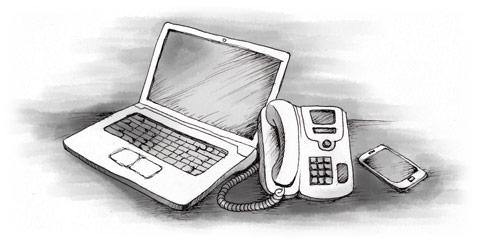Why such a confusing state of television in the world? Well, it’s really a matter of two nations and national pride. The Germans demonstrated one of the first TV productions in 1928 in Berlin, but the Americans were the first to develop a broadcast TV standard and later a color television standard that was also compatible with existing black-and-white sets. The price the US paid for being first was that the other systems, developed later, could learn from and improve on NTSC — which some wags call “Never (Twice) The Same Color.” Although the NTSC color standard is inconsistent and technologically inferior to systems developed later (except for a faster frame-per-second rate), many technical developments have improved the NTSC picture over the years.
The differences between different countries even continued during the TV digitalization of the 21st century. Nowadays most European countries use DVB standards while USA uses ATSC and QAM.
DVB standard in Germany
DVB is Germany’s digital TV system which is different from ATSC in North America. In Germany, most radio and television has a mix of public, fee-funded broadcasters and private, commercial radio and television networks. Every household in Germany with an internet connection, a radio or a TV is required to pay a monthly “broadcast fee” that funds the public broadcasters ARD and ZDF.
Around 25 digital television channels can be received over the air. Very few Germans watch terrestrial TV as 90% have cable and/or satellite. Even if you want to watch television over the air, it isn’t free.
If you want to bring your TV set or display from the USA or Canada, German channels won’t work. This is due to the fact that the colour systems and frame rates are very different (50HZ, 25 per second in Germany and 60 HZ, 30 per second in the US).
Possible Solutions
For an American or Canadian going to German-speaking Europe or vice versa, there are several possible solutions to the TV dilemma, most of them expensive. It is important to find out what TV systems is used in your Bundesland.
- The simplest solution: Buy a DVB TV set before or when you arrive in Austria, Germany, or Switzerland. DVB sets can be expensive but they are very good.
- The best answer (and the most expensive): Buy a multi-system television that handles all three TV systems. Then you don't have to worry about which system you're using, or even where you are. The disadvantages are mostly financial. A multi-system TV costs two to three times more than a normal TV.
- DVB-ATSC converter: This is another option but you will also need to buy a step down voltage transformer. This allows you to watch both German TV and US DVDs on your American television set and therefore you don’t have to buy a new TV.
- TV on your computer: If you use your laptop with a TV tuner card or an external USB device, you can watch and record TV on your computer. You will need to make sure that you have a card or plug-in device that works in Germany.
- Streaming TV services: There are many online TV services that you can access through your mobile, computer or smart TV. This might be the easiest solution for you.
Whatever solution you choose, if you did not bring your bulky tv chair there is good news, you can order a american style tv chair recliner right to your home.
If you want more information about living and moving to Germany, visit www.german-way.com . Here you will find useful tips and advice to make your move as easy as possible.


